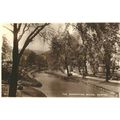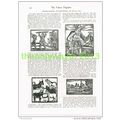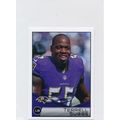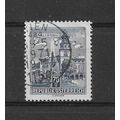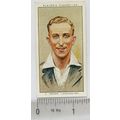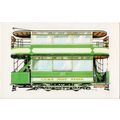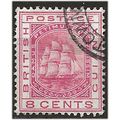Lamb Holm, Burray etc, Orkney - Churchill Barriers from air - postcard c.1970s
- Condition : Used
- Dispatch : 2 Days
- Brand : None
- ID# : 195576148
- Quantity : 1 item
- Views : 181
- Location : United Kingdom

- Seller : justthebook (+1699)
- Barcode : None
- Start : Mon 14 Sep 2020 10:30:24 (BST)
- Close : Run Until Sold
- Remain : Run Until Sold
More Listings from This Seller view all
Seller's Description
- Postcard
- Picture / Image: Churchill Barrier - joining mainland (Holm) in foreground to Lamb Holm, Glimps Holm, Brray and South Ronaldsay. Pentand Firth and Scotland in background
- Publisher: Charles Tait Photographic No. 12
- Postally used: no
- Stamp: n/a
- Postmark(s): n/a
- Sent to: n/a
- Notes / condition: slight crease near right edge (not too noticable)
Please ask if you need any other information and I will do the best I can to answer.
Image may be low res for illustrative purposes - if you need a higher definition image then please contact me and I may be able to send one. No cards have been trimmed (unless stated).
------------------------------------------------
Postage & Packing:
Postage and packing charge should be showing for your location (contact if not sure).
No additional charges for more than one postcard. You can buy as many postcards from me as you like and you will just pay the fee above once. Please wait for combined invoice. (If buying postcards with other things such as books, please contact or wait for invoice before paying).
Payment Methods:
UK - PayPal, Cheque (from UK bank) or postal order
Outside UK: PayPal ONLY (unless otherwise stated) please. NO non-UK currency checks or money orders (sorry).
NOTE: All postcards are sent in brand new stiffened envelopes which I have bought for the task. These are specially made to protect postcards and you may be able to re-use them. In addition there are other costs to sending so the above charge is not just for the stamp!
I will give a full refund if you are not fully satisfied with the postcard.
----------------------------------------------
Text from the free encyclopedia WIKIPEDIA may appear below to give a little background information (internal links may not work) :*************
The Churchill Barriers are a series of four causeways in Orkney, Scotland, with a total length of 1.5 miles (2.4 km). They link the Mainland in the north to South Ronaldsay, via Burray, and the two smaller islands of Lamb Holm and Glimps Holm.
The barriers were built in the 1940s primarily as naval defences to protect the anchorage at Scapa Flow, but now serve as road links, carrying the A961 road from Kirkwall to Burwick.
The barriers are numbered from north to south. In 2016, Historic Environment Scotland designated barriers 3 and 4 as Category A listed buildings.[1]
On 14 October 1939, the Royal Navy battleship HMS Royal Oak was sunk at her moorings within the natural harbour of Scapa Flow by the German U-boat U-47. Shortly before midnight on 13 October U-47, under the command of Günther Prien, entered Scapa Flow through Kirk Sound between Lamb Holm and the Orkney Mainland. Although the shallow eastern passages had been secured with measures including sunken block ships, booms and anti-submarine nets, Prien was able to navigate the U-47 around the obstructions at high tide. He launched a torpedo attack on the battleship while it was at anchor in Scapa Flow. The U-47 then escaped seaward using the same channel by navigating between the block ships.
In response, First Lord of the Admiralty Winston Churchill ordered the construction of several permanent barriers to prevent any further attacks. Work began in May 1940 and was completed by September 1944. The barriers were officially opened on 12 May 1945, four days after the end of World War II in Europe.
The contract for building the barriers was awarded to Balfour Beatty,[2] although part of the southernmost barrier (between Burray and South Ronaldsay) was sub-contracted to William Tawse & Co. The first Resident Superintending Civil Engineer was E K Adamson, succeeded in 1942 by G Gordon Nicol.
Preparatory work on the site began in May 1940, while experiments on models for the design were undertaken at Whitworth Engineering Laboratories at the University of Manchester.
The bases of the barriers were built from gabions enclosing 250,000 tons of broken rock from quarries on Orkney. The gabions were dropped into place from overhead cableways into waters up to 59 feet deep. The bases were then covered with 66,000 locally cast concrete blocks in five-ton and ten-ton sizes. The five-ton blocks were laid on the core, and the ten-ton blocks were arranged on the sides in a random pattern to act as wave-breaks.
Listing Information
| Listing Type | Gallery Listing |
| Listing ID# | 195576148 |
| Start Time | Mon 14 Sep 2020 10:30:24 (BST) |
| Close Time | Run Until Sold |
| Starting Bid | Fixed Price (no bidding) |
| Item Condition | Used |
| Bids | 0 |
| Views | 181 |
| Dispatch Time | 2 Days |
| Quantity | 1 |
| Location | United Kingdom |
| Auto Extend | No |

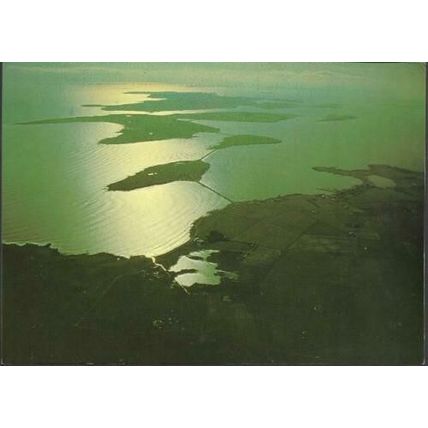

 for 1 item(s)
for 1 item(s)







